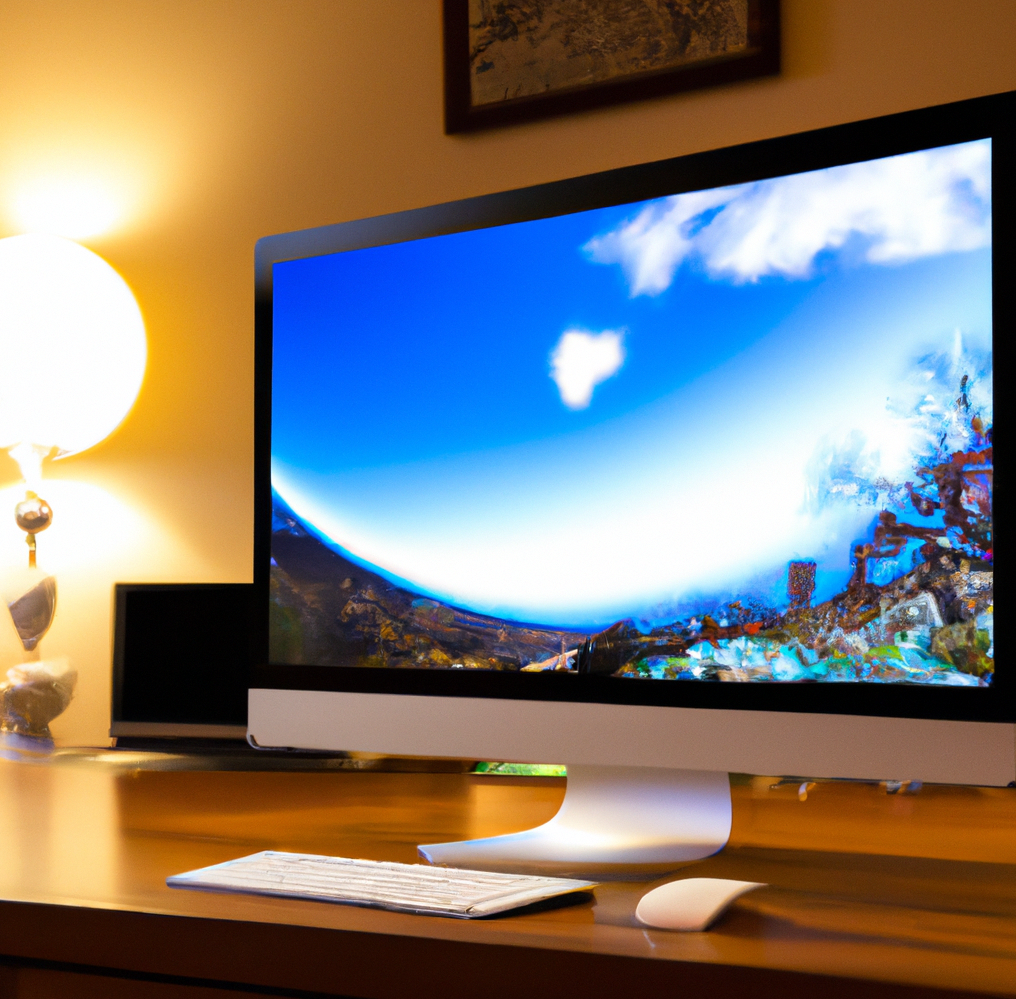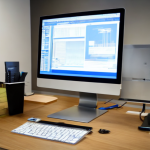What are input ports for monitors?
In a monitor, there are some pretty important parts that they must have to be able to work. They are a screen, a power plug, and an input plug. It is hard to argue that any one of those is more important than the other because without them, the screen just won’t work.
For this article, we will be taking a look at what the input port is for the computer screen. And if you want to skip this whole thing and find out which are the top 5 monitors for sale that we found today just take a look at our listing right there.
There are other input ports for monitors, such as DVI, DisplayPort, and VGA. Each type of port has its own advantages and disadvantages which we will cover below.
Monitors: what types of inputs do they have?
Monitors come in all shapes and sizes, but they all have one thing in common: they need to be connected to a computer to work. But what type of inputs do monitors have? If it sounds like we are talking another language when it comes to this specific feature, and why it matters to you, then keep reading as we have a full explanation ready for you

And what are the best inputs for a monitor?
There are two main types of inputs for monitors: HDMI and DVI ( if we are looking at current tech options). HDMI is the most common input type, and it is found on nearly all monitors. DVI is a bit more old-fashioned but still found on some monitors. There is a third called DisplayPort, but it has pretty specific uses and a pretty niche customer base so we wouldn’t consider it a commonly used type of port for computer monitors.
The best input for a monitor depends on what you want to use the monitor for. If you want to use the monitor for gaming, then you will want to get a monitor with an HDMI input. If you just want to use the monitor for general computer use, then either an HDMI or DVI input will suffice.
What is a DVI input, and what does it mean for a computer monitor?
Most computer monitors have several types of ports for different cable connections. DVI is one type of input found on many monitors. It stands for “Digital Visual Interface,” and
it’s a way to connect your computer to the monitor using a digital signal. The image quality on your screen will be better with a DVI connection than with an analog connection like VGA. If you have the option, use a DVI cable to connect your computer to your monitor.
What is an HDMI input, and what does it mean for a computer monitor?
An HDMI input is a feature that allows a computer monitor to connect directly to an HDMI-equipped device. This type of connection is typically used to connect a computer to a television.
HDMI stands for High-Definition Multimedia Interface. It is a digital interface that transmits audio and video signals in high definition. HDMI cables are typically used to connect Blu-ray players, cable boxes, and other devices to HDTVs.
The main benefit of having an HDMI input on a computer monitor is that it allows you to view HD content from another device on your monitor. This can be useful if you want to watch movies or TV shows from your computer or if you want to view pictures or videos in high definition. Another benefit of having an HDMI input on your monitor is that it allows you to use it as a second screen for your device.
What is a DisplayPort input, and what does it mean for a computer monitor?
A DisplayPort input is a connection used to connect a computer monitor to a desktop computer. It is a digital interface that transmits both audio and video signals ( but with a qualifier needed on the audio transfer, which we go over below). DisplayPort is the newest standard for connecting monitors to computers and offers the highest resolutions and refresh rates available.
What is the difference between DisplayPort and HDMI?
HDMI and DisplayPort are digital display standards that connect monitors to computers. HDMI is the most common standard, found on nearly all new computers and monitors. DisplayPort is a newer standard and is gradually becoming more common.
The main difference between HDMI and DisplayPort is that HDMI supports both audio and video, while DisplayPort only supports audio and video only going one way. It does not have a return option, so if you are hooking something up like a monitor and TV, your monitor could send sound signals to the TV, but there would be no return sound possible. This isn’t honestly a huge deal because it is a pretty rare instance that you would need this to happen.

The advantage of DisplayPort is that it can support higher bandwidth. To be honest, in our everyday life, the normal person wouldn’t need the extra data that it can transfer. The only time it really plays out to be needed is if you are connecting multiple high-definition outputs ( monitors or TVs) and splitting the stream going to them.
We have gone over what screen resolution means for your computer monitor in our other post, and although it might seem odd that ports are related to the resolution they are. If your port can’t support the amount of data to transfer to keep up with the resolution your image won’t look as nice. So all in all, it is again another thing that you have to keep in ming when figuring out which type of port your monitor must have.
What is the best input port for your computer?
A computer monitor is an essential part of any computing setup, and the type of ports it has will determine what kind of devices you can connect to it. So, what is the best input
port for your computer?
A few different types of ports are commonly found on computer monitors, including HDMI, DisplayPort, DVI, and VGA as we have gone over in the article. HDMI is the most popular option and is found on most modern monitors. It offers high resolutions and can carry both audio and video signals. DisplayPort is also becoming increasingly popular due to its ability to deliver high resolutions and refresh rates. DVI is also a common option, but it doesn’t support audio signals like HDMI does. Finally, VGA is an older technology that isn’t as common anymore but can still be found on some monitors.
VGA is rarely seen anymore as an option, with DVI ports trending to that level of being phased out as well. So you are left with HDMI and DisplayPort. For us we would suggest going wtih HDMI as it is pretty universally accepted, and you just probably will never need the features that make DisplayPort worthwhile. If you do need to hook up 10 monitors with HD output, then we would think that DisplayPort might be an option, but for everyday use, HDMI is generally the best choice.
Conclusion
So there you have it , our quick breakdown of what the ports of a computer monitor are, what they do, and the options that you will have to choose from when you are buying a new monitor. Pretty much every normal computer user would be looking to get HDMI, unless in some pretty specific circumstances. We wouldn’t suggest getting VGA or DVI, just because they are getting phased out and you will probably need an adapter if you buy a newer computer to even run them.
Obviously, if you are looking to setup multiple gaming monitors your needs will surpass what the everyday user might find acceptable. But if that is the case, make sure you check out our guide on what to look for when buying a gaming monitor, as we have written a specific article about the features you really want to have for your gaming setup.




